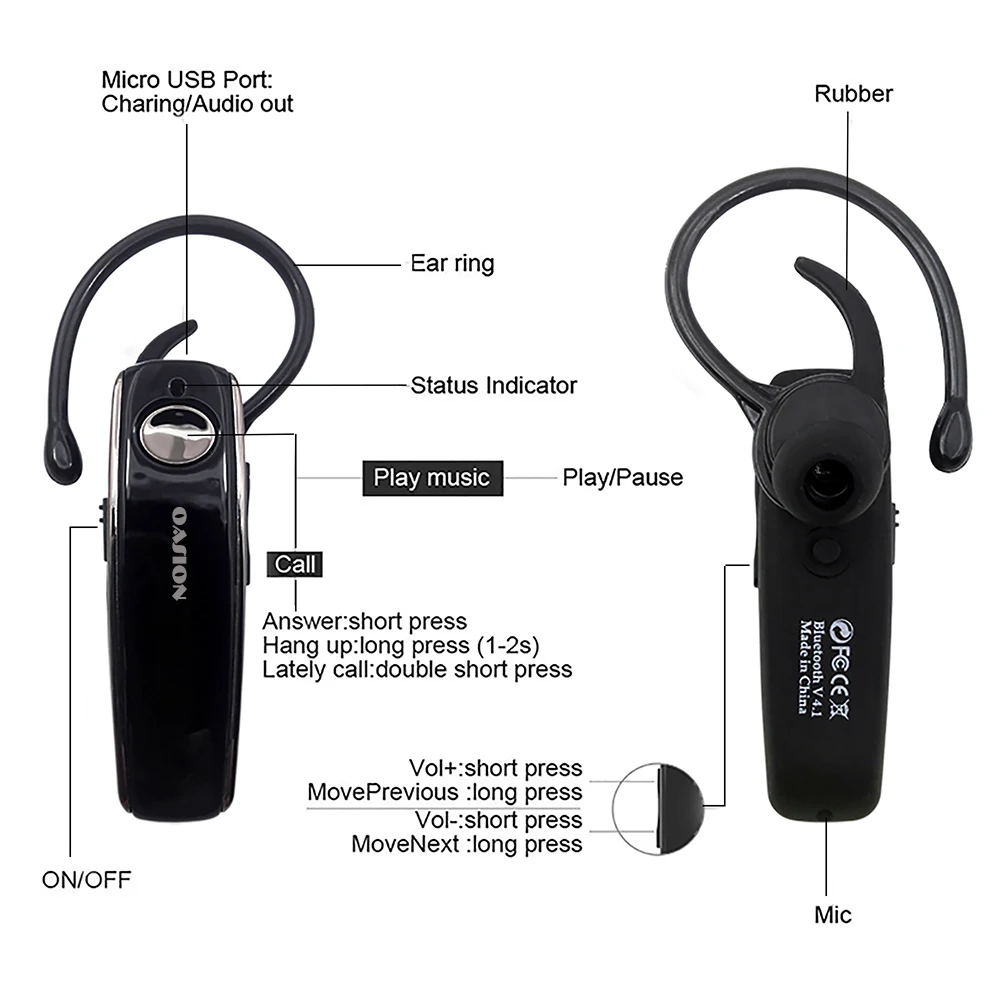

- #Wireless handsfree bluetooth headset 320 kbps
- #Wireless handsfree bluetooth headset drivers
- #Wireless handsfree bluetooth headset full
- #Wireless handsfree bluetooth headset plus
Most Bluetooth headsets offer about 30 feet of range before the signal starts popping badly or devolving into digital artifacts.

If you absolutely can't bear to put something in your ear, go for an over-the-ear stereo headphone pair.
#Wireless handsfree bluetooth headset plus
The best in-ear headsets have a range of fit styles-for instance, several different sizes of eartips, plus an option for an over-the-ear hook. Bigger headsets mean more room for big batteries.Ĭomfort is a very personal matter. Battery Life, Comfort, and RangeĪ guiding principle with mono headsets: If you don't want to charge, go large. For more on noise cancellation, head over to our roundups of the best noise-cancelling headphones and the best noise-cancelling true wireless earbuds, as well as our article on how we test noise cancellation. We test noise-cancelling performance in every one of our reviews. You definitely pay a premium for advanced noise cancellation, but depending on your needs, that feature might be worth it. Headsets with two or three mics usually perform the best because at least one of those detects and cancels ambient noise with adaptive digital signal processing algorithms. How well the other person can hear you when you're in a speeding car with the windows down or in your office on a VoIP call can quickly separate the good performers from the bad. Make sure that the headset you choose has good (or at least acceptable) outgoing call quality.
#Wireless handsfree bluetooth headset full
Call Quality and Noise CancellationĬall quality is an issue in both directions a headset might sound full and crisp in the earpiece, but then transmit a thin, robotic version of your voice to the person on the other end. We compare the two options more decisively in our roundup of the best headsets and headphones for your home office.

The stereo headsets in this roundup, by contrast, are lighter and often have boom mics that easily isolate your voice. Their mics also might not block distracting environmental noises competently. That said, stereo headsets are usually bigger and heavier. So, if you're thinking about a pair of wireless headphones to rock out to, you might not need a separate mono Bluetooth headset. Stereo headsets aren't just for listening to music. So, check what you're getting in the power department before you buy.What's the Difference Between Bluetooth Headsets and Headphones? Manufacturers often juggle these factors and reach a compromise. However, big batteries make the headset heavier, and nobody wants that. This can be fixed by using bigger batteries the devices in this list are sometimes large enough to accommodate the larger battery.
#Wireless handsfree bluetooth headset drivers
Over-ear headphones, especially, have huge drivers at 40-50 mm in diameter. Big batteries can be a headacheĬompanies don't often advertise battery life.

(Samsung's AKG series and Jabra's proprietary sound quality tech are quite good at this.) But remember, you won't hear the original audio as its creator intended. Some headphones and earphones try to mitigate this loss by artificially augmenting the sound with built-in tuning chips. Even the best Bluetooth standards offer only up to 16-bit 44 kHz audio data, which is barely CD quality. So whenever you hear wireless audio, you can expect a drop in quality.īluetooth sends a lot of data over a short bandwidth, so it must heavily compress the audio. Wireless headphones, earbuds, and speakers use Bluetooth to transmit audio data, which reduces sound quality regardless of the audio source. The output quality is another factor to consider.
#Wireless handsfree bluetooth headset 320 kbps
Only perfectly sourced audio can test a driver's limits, so try to use audio files encoded with a 32-bit Lossless codec with 320 Kbps bitrate on at least 96 kHz. For instance, audio quality from sources like YouTube or downloaded MP3s is considered lossy, as they don't carry the full spectrum of the originally recorded audio. If you're listening to low-quality tracks, you can't expect high-quality sound even from the best audio devices. When testing your device, it's important to remember that sound quality depends on device performance and source audio. A few notes on checking the audio quality of headphones


 0 kommentar(er)
0 kommentar(er)
